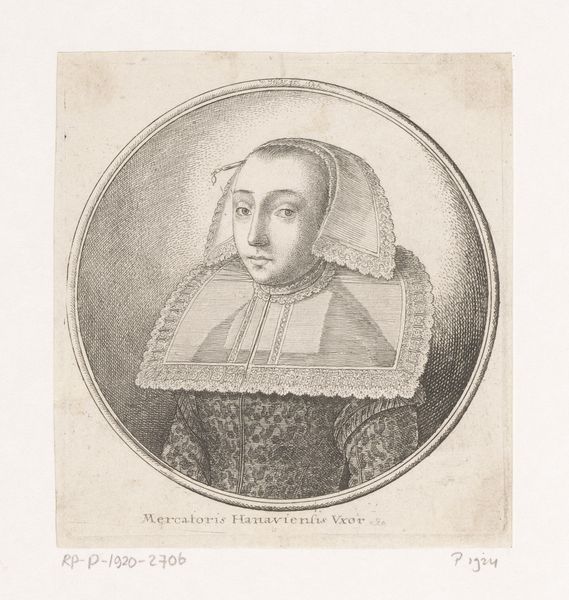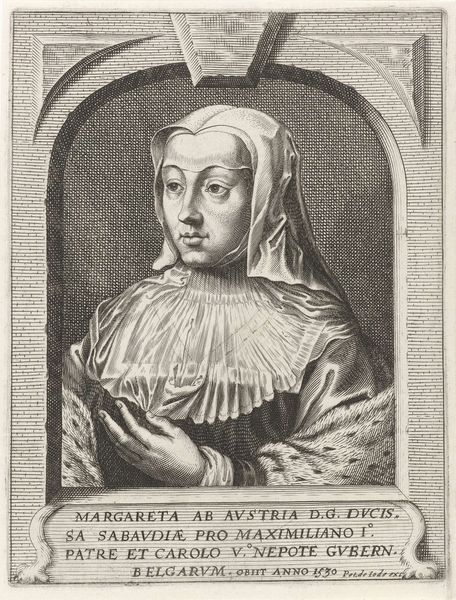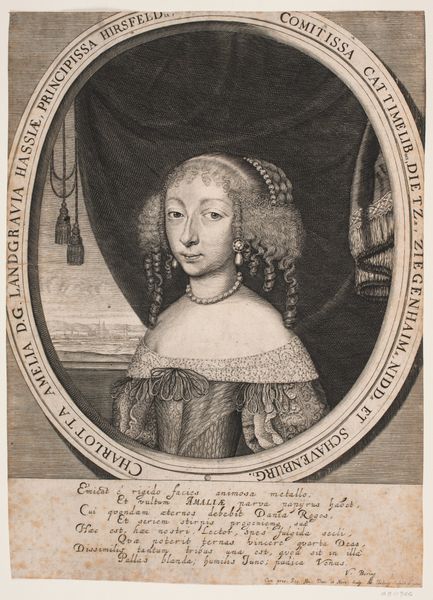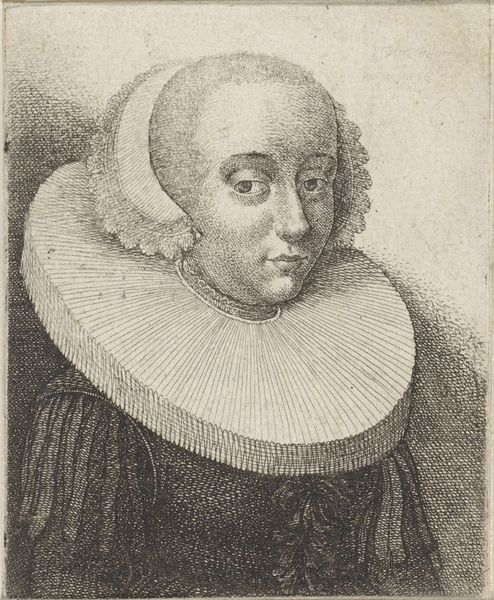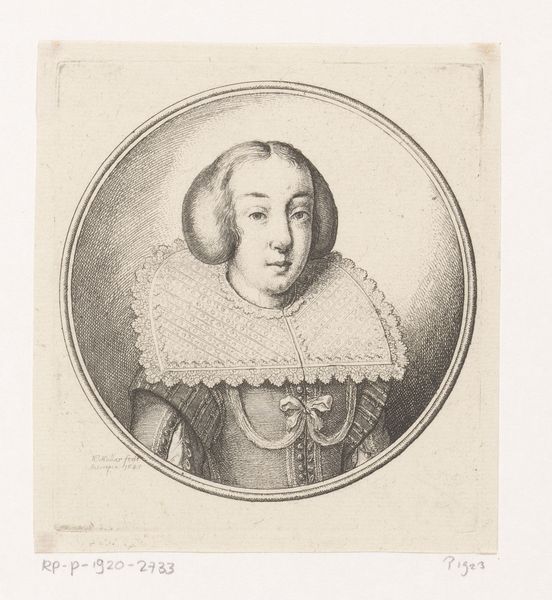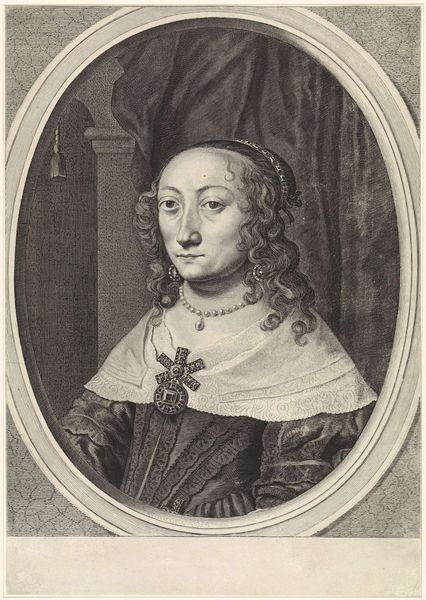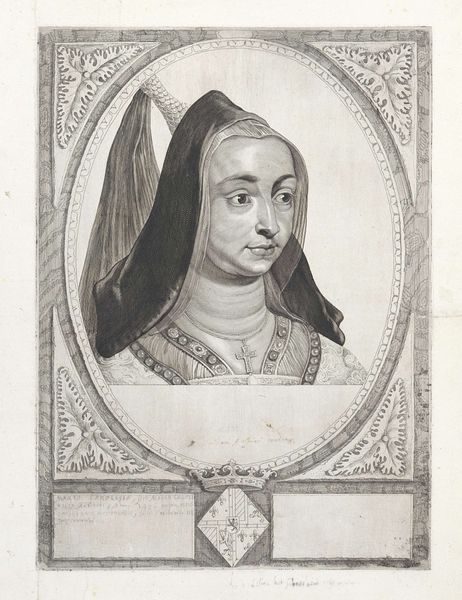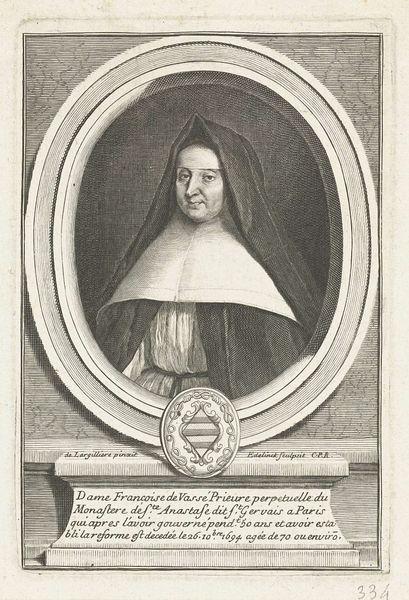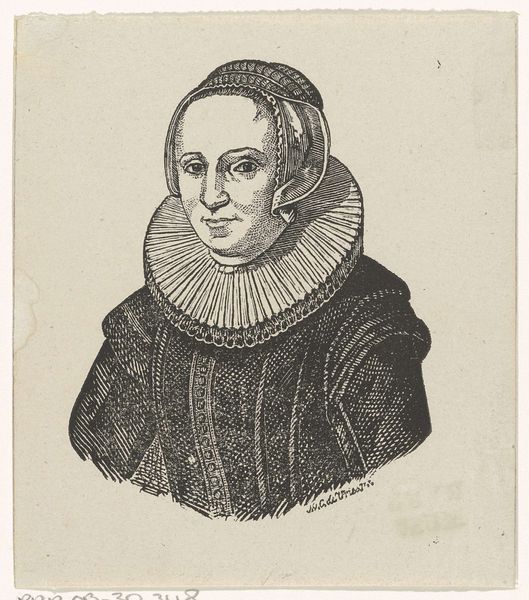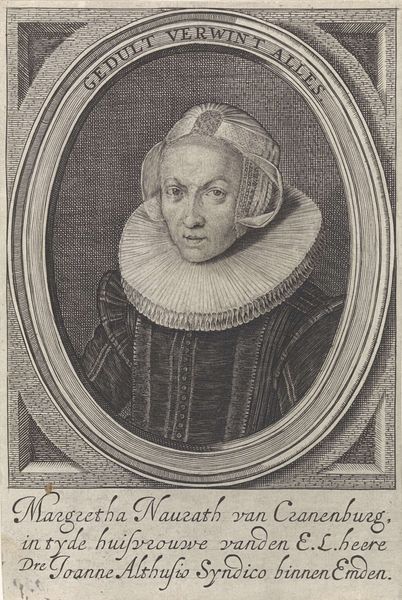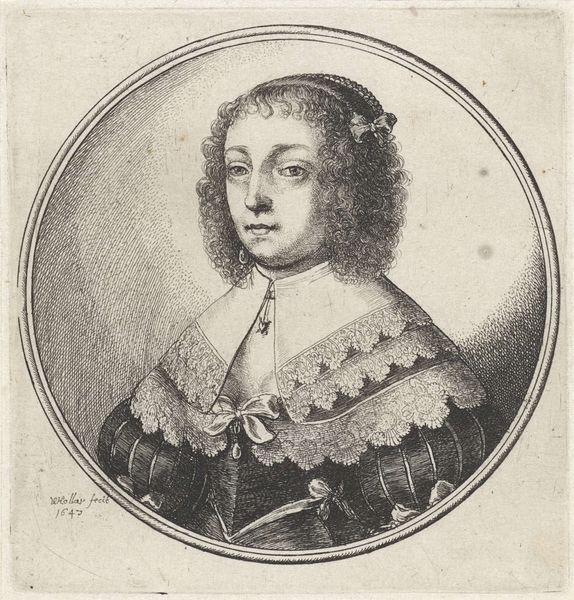
engraving
#
portrait
#
baroque
#
old engraving style
#
portrait drawing
#
history-painting
#
engraving
Dimensions: height 99 mm, width 93 mm
Copyright: Rijks Museum: Open Domain
Editor: Here we have Wenceslaus Hollar's "Vrouw met grote stijve kraag, hoofdkapje en haarpin," from 1642, residing in the Rijksmuseum. It’s an engraving. The detail is astounding, especially in the lace. What compositional elements stand out to you? Curator: The dominance of geometric forms is striking: the circle framing the sitter, the triangle created by the collar. Notice how the contrasting textures are achieved through linear variation—the dense cross-hatching in her patterned dress against the open, airy strokes defining the translucent planes of her collar and veil. It establishes a spatial hierarchy and contributes to a sense of formal order. Do you observe any inconsistencies in this system? Editor: The lines within the face feel softer and less defined compared to the collar, creating a slight disconnect. Curator: Precisely. This disruption draws our attention to the face, inviting a psychological reading despite the formal austerity of the piece. The stark contrast also flattens certain aspects while highlighting the dimensionality of others. Are you drawn to this contrast, and why do you think the artist did it? Editor: I see that, in the emphasis, a contrast has been achieved between flatness and dimensionality, guiding our eye in particular ways and affecting the tone of the artwork overall. Curator: Indeed. Thinking through this emphasis is one way that formal analysis yields surprising richness! Editor: I agree; I have observed and thought about this artwork in much more nuanced ways thanks to our conversation.
Comments
No comments
Be the first to comment and join the conversation on the ultimate creative platform.
